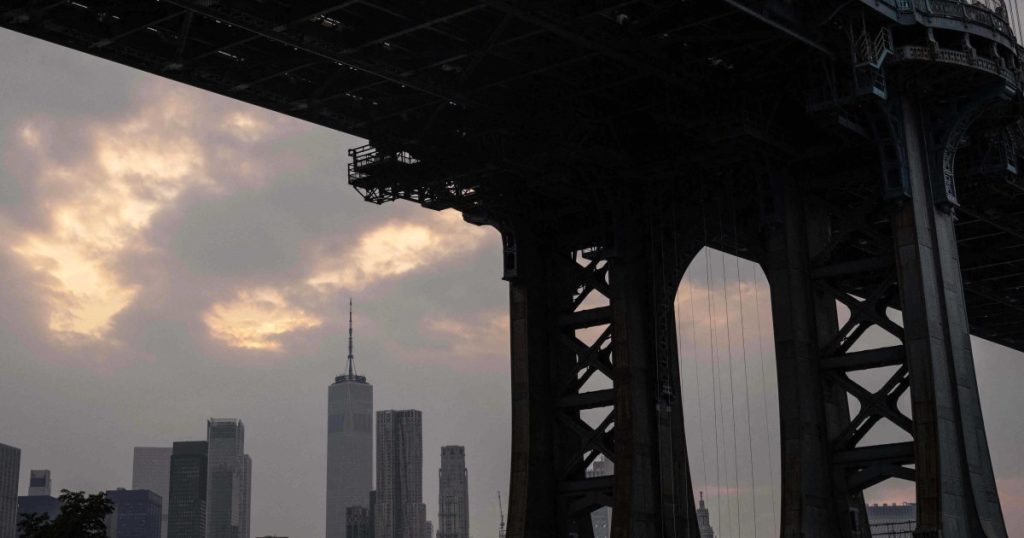
Unhealthy air in parts of the U.S. was forecast for another day Friday as smoke from Canada wildfires continued to be brought south by winds, but some improvement has been seen.
New York City had been blanketed by an eerie orange haze that began Tuesday when smoke from wildfires in Canada was carried south.
The city of more than 8 million people had been considered to have the worst air quality in the world this week, but by early Friday it ranked 15th on a list by the tracking service IQAir.com.
Air quality alerts covered most of New York state, as well as Connecticut, New Jersey, all of Pennsylvania and Indiana, and parts of Ohio and Michigan, according to the National Weather Service.
“Leading up to the beginning of the weekend near-surface wildfire smoke associated with Canadian fires is expected to continue plaguing regions from the Great Lakes to the Mid-Atlantic with reduced air quality,” the weather service said in a Friday forecast discussion.
However, it said that while a northwesterly flow around a low pressure system over the Northeast would “continue the flow of smoke over the region,” it was expected to “relax and eventually shift to more of a westerly direction on Saturday.”
More coverage of the air quality
New York Mayor Eric Adams had warned vulnerable New Yorkers to stay indoors and everyone else to limit their time outside amid the smoke. The weather service said an air quality alert extends into Friday for much of the area.
Other cities, including Philadelphia and Washington, D.C., were also affected. Flights were also delayed or canceled because of the conditions.
Philadelphia schools were to operate remotely Friday out of an abundance of caution, the city’s school district said.
New York City public school students who were scheduled to attend classes Friday were also shifted to remote, although a previously scheduled “clerical day” meant some students would not have been attending classes Friday anyway.
More than 400 wildfires were burning in Canada, which is experiencing very warm temperatures and dry conditions, according to Canada’s government and U.S. forecasters.
The U.S. and other countries have sent or pledged to send firefighters or other help to Canada.
Chantal Da Silva contributed.
 Latest Breaking News Online News Portal
Latest Breaking News Online News Portal






